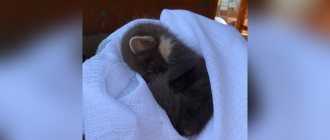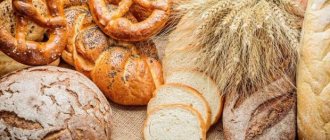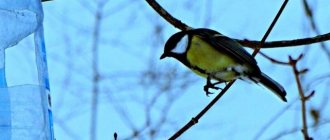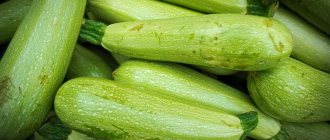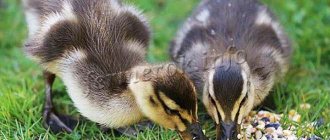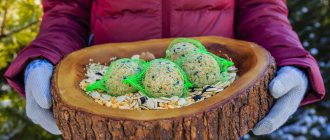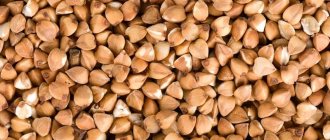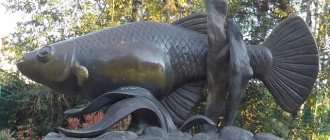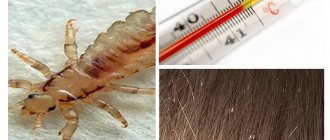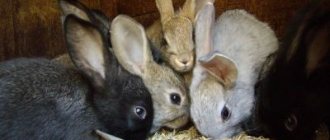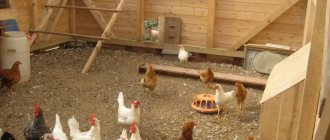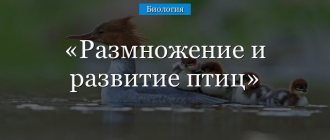The hardest months for birds are the winter months. It is at this time, when the ground is covered with snow, that human attention is especially important for birds. It is very difficult for them to survive the short daylight hours - in 6-7 hours they must not only find food, but also assimilate it in order to survive the long winter night.
Birds in winter are afraid not of cold, but of hunger. Most often they die in severe frosts. To maintain sufficient body temperature, birds spend a lot of energy, which they get from food. It’s good if winter lasts from December to February, but it’s much more difficult when it’s long. After all, the reserves that were made in the fall are simply not enough. Saving birds from starvation is simple: hang feeders outside and don’t forget to replenish them with suitable food.
Many adults and children do not know what to feed birds in the city in winter. The following reminder will help with this:
- Sunflower seeds, peanuts and nuts are one of the favorite delicacies of bullfinches and tits. It is better to crush the seeds with a bottle or rolling pin first. Important: they should not be fried or salted. Salt is not excreted from the body of birds, and they can die from dehydration. The nuts should also be split into at least two halves. If you took several nuts for the squirrels to the park, crush one nut for the birds with your foot and leave it in the feeder. They can also be given seeds of grapes, watermelon, pomegranate, cranberries and citrus fruits (although the citrus fruits themselves are not advisable).
- Feed briquettes or balls contain fat and in severe frosts they will become a very appropriate high-calorie snack.
- Oats – Living up to its name, it is eaten by Common Buntings, Crested Larks and Tree Sparrows.
- Millet and millet are excellent food for buntings and larks, as well as partridges, tits and sparrows. If you don’t know what grains you can feed your birds, give preference to them.
- Raw pumpkin seeds and melon seeds
- Crumbs of dry white bread are the optimal food, but black bread, on the contrary, is harmful. However, the answer to the question of whether it is possible to feed birds bread in winter is rather positive.
- Rowan, elderberry and viburnum , collected in clusters and hung on trees, are ideal food for bullfinches and jays.
- Weed seeds (quinoa, nettle, burdock, horse sorrel) are one of the most accessible and healthy foods for granivorous species.
- Pieces of fat, margarine, lard . Birds will readily peck at them in the city and in the wild. However, they must be unsalted and unsmoked. Tits love lard hanging on a branch most of all.
- Boiled egg . If many different birds regularly fly to the feeder, some of them will certainly like nutritious protein food. Grate the boiled egg along with the shell - this is a rich source of calcium. It is especially loved by insectivorous species - thrushes, robins and waxwings, which winter in cities.
| Feed | Peculiarities | Who eats |
| Sunflower seeds | Seeds should make up 60% of the total feed (enough calories, protein and fat) | Sparrows, tits, woodpeckers, nuthatches and many other birds |
| Rice | Boiled (ready-made) or “raw” cereal (without the use of seasonings) | Sparrows, goldfinches, pigeons and many other granivorous birds |
| Corn | Dried beans | |
| Nuts | Any nuts that are not salted or roasted | Woodpeckers jays and other species |
| Millet | Boiled (ready-made) or “raw” cereal (without the use of seasonings) | Sparrows, goldfinches, pigeons, greenfinches and others |
| Millet | Dry food (often sold as pet parrot food in pet stores) | Sparrows, goldfinches, pigeons, greenfinches and others |
| Oats | Boiled (ready-made) or “raw” cereal (without the use of seasonings) | Sparrows, tits, goldfinches, pigeons, greenfinches and others |
| Wheat | Boiled (ready-made) or “raw” cereal (without the use of seasonings) | Sparrows, goldfinches, pigeons, greenfinches and other granivores |
| Meat | Prepare small pieces of raw or dried meat without salt or spices. | Tits, goldfinches, nuthatches and other species |
| Salo | Raw lard without salt. Can be attached to a stick or string | Tits, goldfinches, nuthatches and other species |
| Beef or chicken fat | We recommend mixing with bread. Fat without salt. | Tits, goldfinches, nuthatches and others |
| Dried rowan | Dried berries, you can use hawthorn berries. | Bullfinches, waxwings and others |
| Maple lionfish (seeds) | Fallen maple lionfish seeds are harvested in the fall. | Bullfinches, waxwings, tap dancers and others |
| Conifer cones | From various types of trees, with nuts | Woodpeckers, crossbill |
| Acorns | Prepared in autumn | jays |
| Watermelon grains, melon | Additional source of fats and nutrients | Bullfinches, jays, woodpeckers |
| Pumpkin seeds | Additional source of fats and nutrients | All granivorous bird species |
| Egg shells | Good source of calcium for the body | For all types of birds |
Is it possible to give tangerines to birds?
What should not be given to birds: salty, fried, sour, hot, spicy peels of citrus fruits - lemons, tangerines, oranges; black bread is strictly forbidden - it contains more salt and yeast than wheat, it causes fermentation and diarrhea, and if left to be preserved goiter, the bird may die
Interesting materials:
How to remove and reinstall Play Market? How to delete and insert pages in PDF? How to remove and reinstall chrome? How can I remove my browser? How to delete a cell without shifting in Word? How to delete a cell in a LibreOffice table? How to remove Yandex bar from Internet Explorer? How to remove Yandex browser from your phone? How to delete a Yandex money account? How to remove Yandex launcher from your phone?
Birds need to be fed correctly
Every year, environmentalists appeal to all residents of the city and villages with a request to show kindness and mercy and hang feeders near their homes. Put grain, seeds, bread crumbs there, and the birds will thank you in the spring. They will destroy pests and entertain you with melodious singing.
It is important to remember that birds receive only part of the necessary food from humans, and must find the rest of their diet independently in nature. An essential condition for a successful feeder is the size of the inlet opening. It should be wide enough so that the bird can easily get inside the feeder and leave it without hindrance.
And if you are patient enough, you can train nuthatches and tits to eat right from your hand.
Seeds, buckwheat and no bread: experts tell us what and how to feed birds in the cold
It has become noticeably colder outside, and many Muscovites have already begun making bird feeders. And in November the city campaign “Feed the birds in winter” will begin. Especially for those who like to feed birds, the editors of the Moscow 24 portal have prepared brief and informative advice from experts: what is possible and what is not.
Photo: portal of the mayor and government of Moscow
Bird houses
Do you have the desire and the opportunity? It's best to make a feeder. Not every bird is ready to eat from the ground: it’s not a matter of disgust, but of instincts. Branches, especially in our winter, can be covered with ice. But the most important thing is that it is more difficult for a predator to get into the feeder (in urban conditions these are most often stray and domestic cats). Any shape will do - from a bottle with a hole cut out to real bird palaces that talented schoolchildren build for competitions.
Recently, the head of the Ornitarium project in Sokolniki, Vadim Mishin, advised feeding street birds with Druzhba cheese curds, as well as meat and lard, on cold days. These foods provide immediate energy, which can help birds on very cold days. Mishin emphasized that the simplest thing you can feed the birds is oatmeal and unpeeled sunflower seeds.
Doctor of Biological Sciences, ornithologist, professor of the Department of Vertebrate Zoology, Faculty of Biology, Moscow State University Irina Boehme assures that each type of feeder will have its visitors. “Any feeders will do - the same plastic bottles are best suited for tits: other birds are afraid of these bottles because they sway. And tits fly there easily. But the sharp edge that remains from trimming needs to be covered with paper or smoothed in some other way so that it doesn’t cut the paws,” she says.
Earlier, Vadim Mishin said that the park will have a map of feeding areas, where guests will be able to install feeders and watch the birds. So far, experts have outlined four such zones (feeders for different species will be placed in them), and the map itself is planned to be drawn up by December. Thus, the birds will not have to fight for food. In addition, this will make species diversity more visible.
Photo: portal of the mayor and government of Moscow
Lunch on schedule
The main thing is not to forget to regularly replenish the food (for example, once a day) and monitor the cleanliness of the “house” itself, otherwise a good deed turns into trash on the trees. Difficulties sometimes arise with feeding: every year some product is declared harmful and dangerous for birds. Irina Boehme believes that there are not many real restrictions. “In principle, you can feed almost everything - in any case, this supports the birds. Seeds are better suited for tits; they crack them open well. You only need to limit all kinds of boiled foods, and it’s better not to give black bread,” the ornithologist added.
Despite the warm autumn, feeding is really important already with the onset of the first cold weather, because birds are often guided by the time of year rather than by temperature. “At the beginning of winter, waxwings and fieldfares arrive; you can feed them with finely chopped dried fruits or dried rowan. This year there is a poor rowan harvest in the region: they have already arrived, but everything is empty,” says Irina Boehme.
By the way, Moscow ponds are actively being invaded by the red duck. Moreover, this did not happen by itself: all these ducks are descendants of birds from the Moscow Zoo, and to this day many cinder families return there for the winter.
But there are nuances in everything. Take the champions in popularity among birds - Moscow ducks, which feed on city ponds. They are almost not afraid of people, many of whom, in fact, happily throw loaves of white bread into ponds. The head of the Ornitarium at Sokolniki, Vadim Mishin, does not approve of this practice.
“Ducks from white bread become so fat that sometimes they cannot fly. Their internal digestive system is disrupted. The ideal food for ducks is any boiled cereal. Our veterinarian nurses weakened birds with boiled buckwheat porridge and pureed raw liver, but I don’t know if people will feed birds this way. Hardly. Compound feed sold for waterfowl is a very good thing. Buy a bag at the poultry market and you will have the right food for the whole winter. Pour it into a bowl, place it by the pond - the birds will eat it all with pleasure,” Mishin told the Moscow 24 portal.
Ornithologists tell us what you can feed birds in winter
General rules for complementary feeding
Once you start feeding birds, make it a habit. Regularly delight them with healthy treats. Birds quickly remember the place of feeding and get used to it . Don't forget: we are responsible for those we have tamed!
Important! The more varied you organize your menu, the more species of birds will be interested in your feeder.
From time to time, empty the feeder of leftover food. Rot and mold are fertile ground for the development of harmful microorganisms .
How do tits living near humans diversify their diet?
Tits living near populated areas constantly fly to human habitation in search of food, and always find it. In gardens and vegetable gardens they catch a large number of insects, but they can peck fruits and berries (for example, apples and strawberries), and in the fields they happily eat grain. Tits especially love sunflower and hemp seeds - for them these are the most delicious, fatty and aromatic options for plant food that can only be obtained.
Tits often visit farms - they catch flies, steal food that people give to livestock, and also happily drink milk and cream, pecking at cottage cheese, butter and sour cream, if you are lucky enough to sneak up on them. There have been cases where birds “hunted” dairy products right in stores and markets, deftly opening packages with their beaks and paws. Tits love to “hunt” in shopping arcades, where lard and meat (fresh and frozen) are located, and on occasion they will not refuse fish.
What should not be given as food
Birds are prohibited from feeding spoiled food supplies that have fermented and are covered with mold. But there are also a number of restrictions that apply to products familiar to humans. They can cause irreparable damage to the health of birds and even threaten their lives :
- Salted seeds , pistachios, cookies, crackers. Birds do not have sweat glands. The entire burden of removing excess salt from the body falls on the kidneys, so they may refuse heavily salted food. The musculoskeletal system also suffers, because some salts tend to be deposited in the joints. Then any movement of the bird will cause severe pain.
- Roasted nuts . This is where fats can cause harm to the body. When oversaturated with them, the organs of the digestive system (pancreas, liver) suffer.
- Rye bread . Due to the accelerated fermentation process, a situation often arises when the bird is blocked from breathing due to gases. This happens because the goiter begins to compress the trachea.
- Fresh wheat bread . It is dangerous because in a humid environment it turns into a sticky substance. It has difficulty moving through the digestive tract and causes indigestion.
- Cherry , peach, apricot kernels, as well as almonds. They are easy to poison because they are rich in hydrocyanic acid.
- Old, rancid millet . Harmful fats accumulate on its surface.
- Potato . The alkaloid solanine, which is found in raw tubers, causes poisoning in birds. The high concentration of starch in boiled potatoes creates an unwanted burden on the stomach.
- Mushrooms . When consuming mushrooms, there is a high probability that spores of clostridia, the causative agent of botulism, will enter the bird’s body.
- Canned food . When preserving foods, sugar, salt, and vinegar are used that are harmful to poultry health.
Interesting things on the site:
Beneficial properties of oats for the stomach
Calorie content and beneficial properties of brown rice
Feeding animals with buckwheat
Russian veterinarians claim that buckwheat is one of the main products available and healthy for nutrition. Both brown and green cereals are equally suitable for animals and birds. They differ not only in the method of preparation, but also in their preparation: the kernel gets its brown color after frying. This process increases shelf life but reduces nutrient concentration. Green buckwheat has a different taste from buckwheat, but is richer in chemical composition.
Large farms also purchase buckwheat bran and flour dust, which are a by-product of cereal processing. In addition to whole grains, you can use:
- crushed cereals or prodel;
- flakes;
- Smolensk groats.
The benefit of buckwheat lies in its nutritional value. Cereals contain:
- a lot of protein;
- minerals (large amounts of sodium, calcium, copper, sulfur, iodine, etc.);
- vitamins of group B, PP and E.
Buckwheat straw is also used in feed: it is a low-calorie and nutritious feed, rich in fiber.
Despite the fact that buckwheat is a versatile and healthy forage crop, an allergic reaction is sometimes possible. Animals may have individual intolerance to the product, genetic diseases that cause allergies to minerals or dietary fiber, as well as acute gastrointestinal diseases.
Diet for the domestic tit
A tit living at home should be fed as varied as possible, bringing its diet as close to natural as possible. If, for example, a bird for some reason does not receive enough animal protein for a long time, it begins to have problems with plumage, skin and metabolism, which later lead to serious health problems. And from an overabundance of animal food, the liver is the first to suffer.
From what you can find in regular stores and prepare at home, the following are suitable:
- boiled eggs;
- unsalted lard and lean boiled meat - beef, chicken breast;
- grated carrots and apples;
- various cereals (oats, millet, buckwheat, crushed corn),
- sunflower and pumpkin seeds, unroasted;
- dairy products - butter, cream, cottage cheese.
Lard should be given just a little bit (unsalted lard) , since tits living in warm conditions do not need a lot of it. Boiled eggs are given mixed with grated vegetables; in their pure form they are too high in calories for the bird and are harmful to its liver.
Instead of insects, you can breed mealworms (mealworms). Its larvae are very high in calories; birds need to be given them little by little. Adult insects can only be fed by separating the jaws first (otherwise the beetle can damage the bird's esophagus).
From what is sold in pet stores, food for insectivorous birds, grain mixtures for canaries, as well as gammarus, daphnia and bloodworms are suitable - they can replace insects. You can also buy millet, canary, flax and hemp seeds. As an additive, you need to use mineral fertilizers for small species of birds.
Spring-summer diet of tits
All summer, the tit catches various small invertebrates, “eating” them with a small amount of seeds and grains, choosing among them the richest in oils and proteins.
In the warm months, these birds destroy huge numbers of:
- Crawling and flying insects (including forest pests) - weevils, forest bugs and cockroaches, aphids, mosquitoes, midges, flies, grasshoppers, crickets, dragonflies, earwigs, as well as ants, bees and wasps, deftly removing their sting before swallowing .
- Arthropods: millipedes, mites, spiders.
- Worms and other small invertebrates.
Tits eat especially many insects and their larvae during the breeding season. And they feed the chicks mainly with small (up to 1 cm long) butterfly caterpillars.
As a supplement, birds peck the seeds of birch, linden, elderberry, maple, lilac, beech, horse sorrel, burdock, pickleberry, as well as rowan berries, serviceberry, blueberry and the fruits of other plants. If they find nuts or other edible seeds with a hard shell, they crush them with their beak, hold them with their paw or place them in a crevice of a tree, and feast on them with pleasure.
Titmouse nutrition from late autumn to early spring
In autumn, the percentage of plant foods in the diet of tits begins to increase. Often at this time they visit the fields, picking up the grain of oats, rye, wheat and corn remaining after the harvest.
Although too severe winters can force tits to fly towards the south for a considerable distance, in the strict sense of the word they are not migratory. Therefore, they have to adapt to all the changes that the changing seasons of the year bring into their lives.
In winter, birds carefully examine the bark of trees, looking for sleeping insects and their larvae, and also willingly eat berries, seeds of pine, spruce, beech, cedar, and hazel remaining on the branches of bushes and trees.
At this time of year, small species of bats that have fallen into suspended animation can also become their victims. However, in early spring, when bats are still lethargic, tits also often attack them. They do not disdain carrion.
Some species of tits, such as blue tits and tits, make reserves for the winter . The most common species of tit in Russia, the great tit (or big tit), does not make such reserves, but willingly feasts on strangers.
